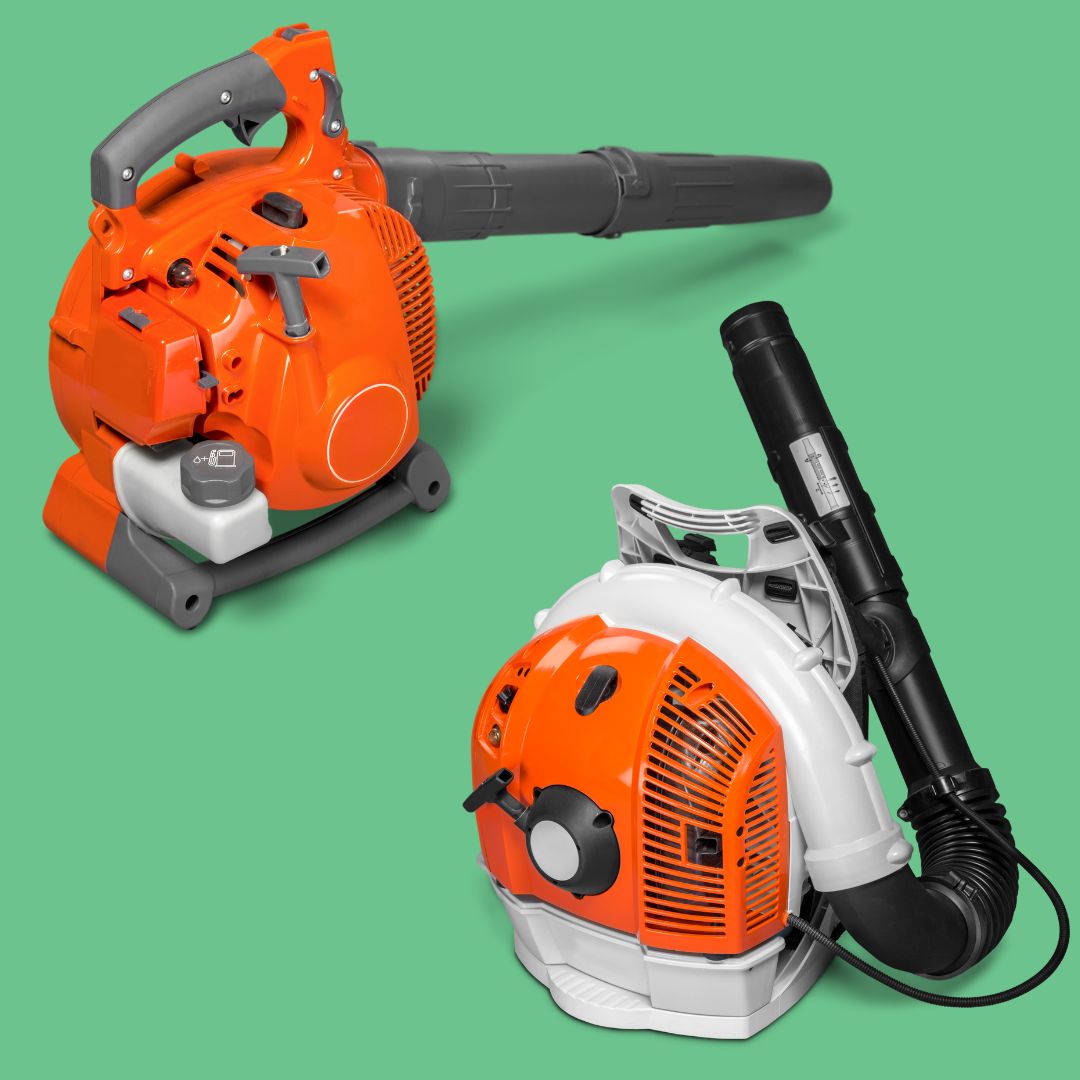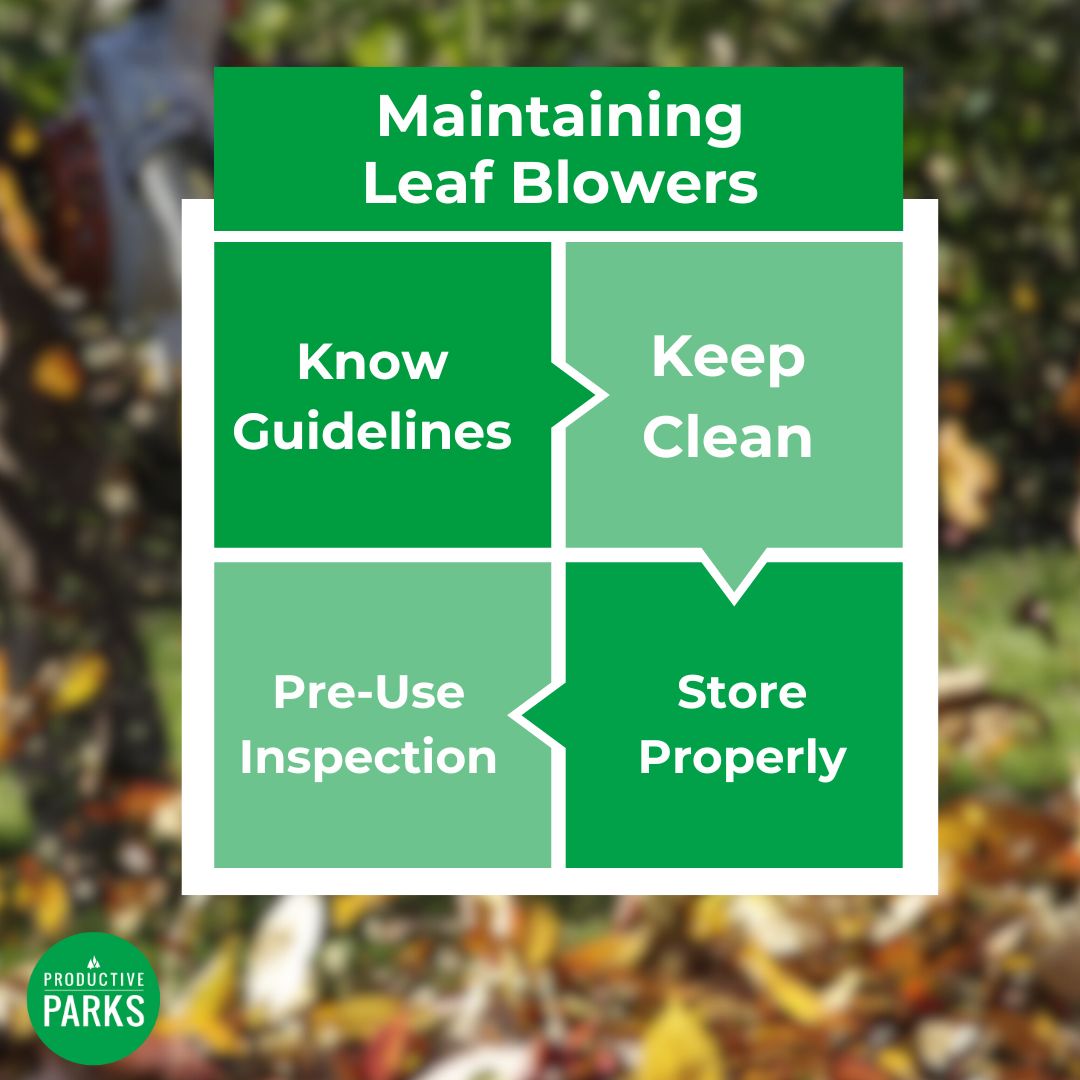
You know the sound as soon as you hear it–the whir of a leaf blower doing its job.
If you work in park maintenance, you likely have a leaf blower as one of your trusted tools. After all, despite the name, leaf blowers can help with various cleaning and clearing tasks.
Like most equipment, they need regular maintenance to operate at their best.
In this article, learn more about leaf blowers' versatility and how to maintain them for optimal efficiency and increased lifespan.
What is a Leaf Blower?

A leaf blower, or blower, is a tool that pushes concentrated air out to a specific area, allowing professionals and homeowners to quickly clear leaves and other debris. Blowers typically clean driveways, walkways, sidewalks, paths, and parking lots.
Blowers can also clear light snow, clean gutters, clean or dry equipment, and clear debris from areas during fire season.
For example, after a day of mowing–especially after a recent rain–a leaf blower can help staff clear out caked-on grass clippings before mowers return to the shop.
Some blowers also have a vacuum feature where they can suck leaves and other debris into an attached bag or receptacle.
Handheld or backpack blowers are available. Handheld blowers are lighter and easier to maneuver. They work best for light-duty tasks and tighter areas. Backpack blowers have more power and airspeed. They can clear heavier debris like sand or gravel from larger spaces. Many have ergonomic designs to reduce strain on arms, hands, and the back.
Also, leaf blowers can be gas or electric-powered. Some agencies are switching to electric-powered blowers because they are generally lighter, quieter, easier to maintain, and have a reduced carbon footprint. Clearing larger areas or heavier debris, however, may require the power of a gas-powered blower.
Maintaining leaf blowers is a fairly easy but necessary process. Both blower types have similar maintenance requirements, while gas blowers need additional care. Let’s take a look at how to maintain leaf blowers.
Leaf Blower Maintenance

Some general maintenance is the same for both types of blowers. This includes:
Know the Manufacturer’s Guidelines
The maintenance outlined in this article is general and applies to most blowers. But…Your staff should know the manufacturer’s guidelines for each blower your agency uses. Keep manuals handy in a dedicated shop or easy-to-access cloud storage for asset management.
Keep Clean
Clean the blowers after each use. They should be cleared of debris and wiped down. Pay attention to air vents or cooling fins and clean dirt and debris that may restrict airflow.
Routinely check and clean air filters. Wash or vacuum dirty filters to remove dirt and debris. Replace damaged filters to help protect your blower.
Pre-Use Inspection
Before using a blower, check for any loose, damaged, or missing parts. Tighten any loose hardware or fasteners and replace missing parts. Check all cables and connections. Also, check the nozzle for any cracks that may impact functioning.
Store Properly
Store in a clean, dry location away from sources of moisture and extreme temperatures. Ideally, leaf blower storage would be in a well-ventilated space away from dangerous or flammable chemicals.
After using electric blowers, you will need to charge the batteries. Follow the manufacturer’s guidelines because some models or batteries have specific instructions. For example, removing the battery from the charger once it is fully charged or storing at a specific level of charge.
Additional Gas Blower Maintenance
Gas blowers require more maintenance than their electric counterparts. Here are some of the main things you should do.
Checking Fuel and Oil
Prior to use, make sure you have the appropriate fuel type and oil. For example, a 4-cycle engine gas blower needs its oil levels checked and changed at recommended intervals. Other blowers require the oil added to the gas at specific ratios.
Be sure to check the fuel line and filter each month and replace the filter when necessary.
Inspect Spark Plugs
Spark plugs corrode over time due to exposure to fuel combustion. Inspect and clean the area around a spark plug. If necessary, remove and clean the plug.
Replace worn or damaged spark plugs according to manufacturers’ guidelines.
Cleaning & Adjusting Carburetor
Clean the outside of the carburetor and fan blades. Carburetor cleaners help to clear out accumulated clogs and residue.
If the blower is difficult to crank or doesn’t idle properly, you may want to adjust your carburetor.
The Takeaway
From cleaning the shop’s floor to clearing out a large area of fallen leaves to removing cicadas from a walkway, blowers are a trusted tool for many parks maintenance crews. All blowers require maintenance to operate at their best. Investing time to maintain gas and electric blowers appropriately will help increase their lifespan and reliability.
Scheduling preventative maintenance tasks for your leaf blower is one way to ensure it gets the proper care so it remains a trusted tool when needed most.
